In the broader context of racism against Black Americans and racism in the United States, mass racial violence in the United States consists of ethnic conflicts and race riots, along with such events as:

Gary Leon Ridgway, also known as the Green River Killer, is an American serial killer and sex offender. He was initially convicted of 48 separate murders. As part of his plea bargain, another conviction was added, bringing the total number of convictions to 49, making him the second most prolific serial killer in United States history according to confirmed murders. He killed many teenage girls and women in the U.S. state of Washington during the 1980s and 1990s.

Sherman Joseph Alexie Jr. is a Native American novelist, short story writer, poet, screenwriter, and filmmaker. His writings draw on his experiences as an Indigenous American with ancestry from several tribes. He grew up on the Spokane Indian Reservation and now lives in Seattle, Washington.
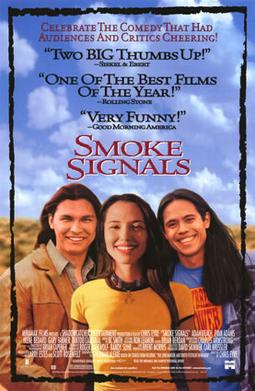
Smoke Signals is a 1998 coming-of-age comedy-drama film directed by Chris Eyre from a screenplay by Sherman Alexie, based on Alexie's short story collection The Lone Ranger and Tonto Fistfight in Heaven (1993). The film won several awards and accolades, and was well received at numerous film festivals.
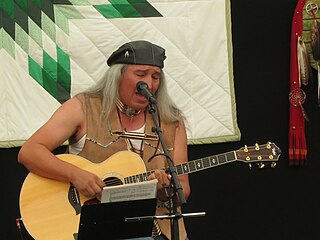
Jim Boyd was a Native American singer-songwriter, actor, and member of The Jim Boyd Band on the Colville Indian Reservation in Washington. Boyd performed in several groups, including XIT, Greywolf, and Winterhawk. Boyd performed four songs with lyrics by Sherman Alexie on the soundtrack for the 1998 movie Smoke Signals, and also appeared in Alexie's, The Business of Fancydancing.

The Lone Ranger and Tonto Fistfight in Heaven is a 1993 collection of interconnected short stories by Sherman Alexie. The characters and stories in the book, particularly "This Is What It Means to Say Phoenix, Arizona", provided the basis of Alexie's screenplay for the film Smoke Signals.

The Business of Fancydancing is a 2002 film written and directed by Sherman Alexie. It is loosely based on his 1992 book of the same name, a collection of stories and poems.

Dayton Leroy Rogers is an American serial killer who has been tied to the murders of seven women. He preferred "street" women, usually addicts, sex workers, and runaways. The bodies of six of the women were found at a dump site located on privately owned forest lands outside Molalla, Oregon, and thus he was dubbed the "Molalla Forest Murderer".

Ten Little Indians is a 2004 short story collection by Sherman Alexie. The collection contains nine stories all of which focus on the Spokane tribe of Native Americans in Washington state.
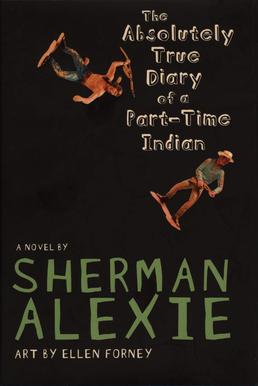
The Absolutely True Diary of a Part-Time Indian is a first-person narrative novel by Sherman Alexie, from the perspective of a Native American teenager, Arnold Spirit Jr., also known as "Junior," a 14-year-old promising cartoonist. The book is about Junior's life on the Spokane Indian Reservation and his decision to go to a nearly all-white public high school away from the reservation. The graphic novel includes 65 comic illustrations that help further the plot.

Reservation Blues is a 1995 novel by American writer Sherman Alexie, a member of the Spokane and Coeur d'Alene tribes.
Timothy Patrick Barrus, also known as Tim Barrus, is an American author and social worker who is best known for having published three "memoirs" between 2000 and 2004 under the pseudonym Nasdijj, by which he presented himself as a Navajo. The books were critically acclaimed, and Nasdijj received several literary awards and recognition from major institutions. His "memoirs" dealt in part with issues of two adopted children who suffered from severe problems.

Longhouse Media is a Washington state non-profit indigenous media arts organization, based in Seattle. It was established in January 2005 by Executive Director, Tracy Rector and former Artistic Director, Annie Silverstein, with the support of the Swinomish Indian Tribal Community. Longhouse Media supports the use of today’s technologies by indigenous people and communities as a tool for self-expression, cultural preservation, and social change. Longhouse Media counts 4 full-time and 3 part-time staff, 30 active volunteers, and 8 board members. Among the founding board members is award-winning author, playwright and poet Sherman Alexie, from the Spokane/Coeur d'Alene Tribes.

The portrayal of Indigenous people of the Americas in popular culture has oscillated between the fascination with the noble savage who lives in harmony with nature, and the stereotype of the uncivilized Red Indian of the traditional Western genre. The common depiction of Indigenous Americans and their relationship with European colonists has changed over time. Today indigenous Americans are fully modern peoples who retain much of their cultural beliefs and traditional practices.
Robert Arthur Alexie was a Canadian First Nations novelist and a land claim negotiator who played a key role in land claim agreements in the Northwest Territories.
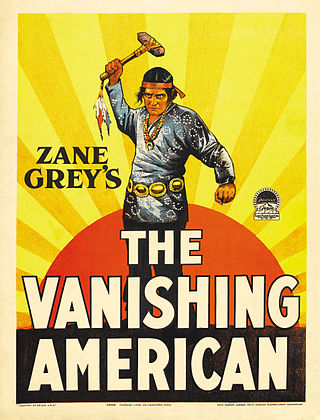
The Vanishing American is a 1925 American silent Western film produced by Famous Players–Lasky and distributed through Paramount Pictures. The film was directed by George B. Seitz and starred Richard Dix and Lois Wilson, recently paired in several screen dramas by Paramount. The film is based on the 1925 novel The Vanishing American by Zane Grey. It was remade as a 1955 film starring Scott Brady and Audrey Totter.
Native American literature is literature, both oral and written, produced by Native Americans in what is now the United States, from pre-Columbian times through to today. Famous authors include N. Scott Momaday, Leslie Marmon Silko, Simon Ortiz, Louise Erdrich, Gerald Vizenor, Joy Harjo, Sherman Alexie, D'Arcy McNickle, James Welch, Charles Eastman, Mourning Dove, Zitkala-Sa, John Rollin Ridge, Lynn Riggs, Diane Glancy, Hanay Geiogamah, William Apess, Samson Occom, et al. Importantly, it is not "a" literature, but a set of literatures, since every tribe has its own cultural traditions. Since the 1960s, it has also become a significant field of literary studies, with academic journals, departments, and conferences devoted to the subject.
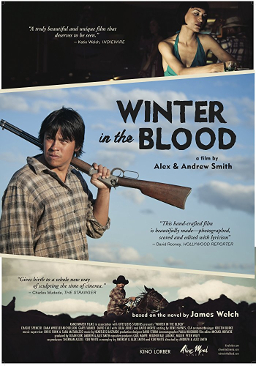
Winter in the Blood is a 2013 American film written and directed by brothers Alex Smith and Andrew J. Smith and produced by Native American author Sherman Alexie. The film was based on the debut novel Winter in the Blood (1974) by noted author James Welch, who was a leader of the Native American renaissance in literature.
Terese Marie Mailhot is a First Nation Canadian writer, journalist, memoirist, and teacher.

President Ulysses S. Grant sympathized with the plight of Native Americans and believed that the original occupants of the land were worthy of study. Grant's Inauguration Address set the tone for the Grant administration Native American Peace policy. The Board of Indian Commissioners was created to make reforms in Native policy and to ensure Native tribes received federal help. Grant lobbied the United States Congress to ensure that Native peoples would receive adequate funding. The hallmark of Grant's Peace policy was the incorporation of religious groups that served on Native agencies, which were dispersed throughout the United States.















